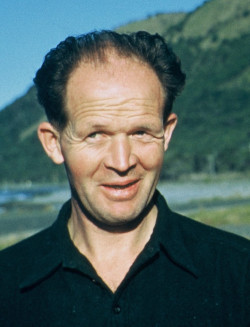2024 Wellman Research Award
No award made in 2024
Past Wellman Research Award winners
| Year | Person | From | For |
| 2023 | Rachael Baxter | Otago | Melting/equilibration experiments on alkali basalts from the Auckland Volcanic Field |
| 2022 | Pedro Doll | Canterbury | Dating lava-forming eruptions from Mt Ruapehu, to improve estimates of the timing of these hazardous events. |
| 2021 | Ella Nisbet | Massey | Investigating the paleo-history of large, soft-rock landslides in the Manawatū/Rangitikei Region |
| 2020 | Marlena Prentice | Waikato | Investigating volcanism within the Kaimai and Tauranga volcanic centres, which took place during the transition in volcanic activity from the Coromandel Volcanic Zone to the Taupo Volcanic zone. |
| 2019 | Andrew La Croix | Waikato | Combining oceanographic measurements with sediment coring to link the hydraulic processes and depositional record of mud in the Firth of Thames, North Island. |
| 2018 | Stephanie Junior | Otago | As to whether Au concentration, residence and mobility correlates to mantle chemistry, which may provide a new understanding of preferential emplacement of gold in Earth's crust. |
| 2017 | James Veitch | Massey | To utilise 10Be concentrations in alluvial and dune sediments as a proxy for major catchment disturbance in the Ruamahanga catchment, Wairarapa, during the late-glacial to Holocene. |
| 2016 | Rosie Cole | Otago | To experimentally reproduce interactions between deforming lava bodies and ice, to better understand processes involved with glaciovolcanic eruptions. |
| 2015 | Jack Williams | Otago | Alpine Fault zone structure. |
| 2014 | Eric Breard | Massey | Physical modelling of pyroclastic density currents. |
| 2013 | Sarah Bastin | Canterbury | Palaeo-liquefaction research. |
| 2012 | Paul Ashwell | Canterbury | The collapse and inflation of erupting lava domes. |
| 2011 | Felix Marx | Otago | Living & fossil baleen whales. |
| 2010 | Greg De Pascale | Canterbury | In-depth investigation to define the most recent dynamics of the Alpine Fault, the largest source of seismic hazard on the South Island. |
| 2009 | William Ries | Victoria | Locating active faults in eroded landscapes (South Taranaki) by developing a GIS extension to digitally analyse various geomorphic features. |
| 2008 | Alastair Clement | Massey | The geomorphic evolution of the lower Manawatu Valley, North Island. |
| 2007 | Deborah Crowley | Massey | Late Miocene-Pliocene Rangiauria Breccia of Pitt and Mangere Islands, Chathams Island |
| 2006 | No award made | - | - |
| 2005 | Katherine Holt | Massey | Quaternary stratigraphy,Chatham Islands |
| 2004 | Alex Winter-Billington | Victoria | Hydrology and motion of Brewster Glacier |
| 2003 | Philip Burge | Canterbury | Fossil beetles and timing of glaciation in New Zealand |
| 2002 | Derek Birks | Massey | Volcanic events on SW flanks of Mount Taranaki |
| 2001 | Richard Smith | Waikato | Magma residence times by ion microprobe analyses of zircon |
Harold Wellman

Harold Wellman (1909-1999) was a scientist unrivalled in the remarkable contribution he made to our understanding of New Zealand earth science. He had a varied and colourful early career as a gold miner, surveyor and geophysical survey assistant. In 1937 he joined New Zealand Gological Survey's coal resources survey in Greymouth, which began his most productive period of research. His intense geological debates with colleagues at the bar of the Albion Hotel in Greymouth are now legendary.
Harold is best known for his recognition of the Alpine Fault, but his major contributions to advancing New Zealand earth science are many. They included establishment of the New Zealand Fossil Record File, recognition of major displacements of rock in Northland, development of biostratigraphic stages for subdividing the New Zealand marine Cretaceous based on field observations and collections of fossil Inoceramus.
In the mid-1950s Harold had a short stint with British Petroleum in Gisborne before taking a position in the Geology Department at Victoria University of Wellington in 1958, an attachment he maintained even after his retirement in 1974. Harold's international reputation in pioneering structural and tectil tonic geology was highlighted in a 1992 BBC Horizon documentary on him, titled "The Man that moved the Mountains."
Harold and his wife Joan provided the funds for the first Harold Wellman Prize for an important fossil find, because in the 1980s he felt that the role of paleontology in geology was losing its former significance. In 1998 they established the Wellman Research Awards to assist young geology researchers.
